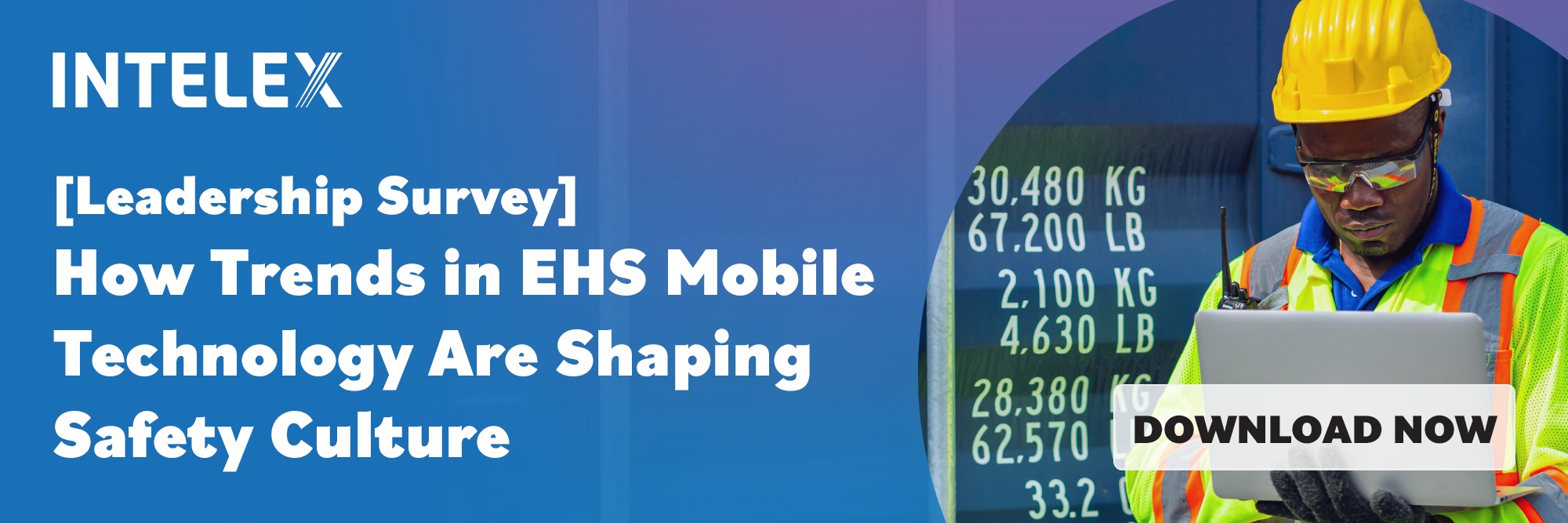How Intelex Safety Bulletins Improve Workplace Communication
January 27, 2022

Bulletins represent the most effective way to disseminate information to workers, especially those who are working remotely. But what exactly are safety bulletins? Great question!
Safety bulletins are a form of communication akin to targeted, bite-sized public service announcements (PSA) meant to deliver relevant safety information and training to workers – usually via mobile devices – in the moments when the information has maximum value. Safety bulletins can be simple text or media-rich, sent in real-time or schedule and may require follow-up actions or just opening. They can be targeted to specific groups or sent to everyone. The key differentiator is that safety bulletins allow the sender to monitor the engagement of the receiving group: Did everyone see the safety bulletin? At what time? How did they respond if they had multiple response options?
In essence, they are the most effective way to disseminate safety information to workers, keeping them updated on changes in work processes, providing mini toolbox talks, corporate updates, detailed instructions and engaging them with EHS best practices and the company.
Good internal communications are vital to the success of any company’s EHS program. Employees need timely and functional communications to stay informed, safe and productive. Different modes of communications are suited for different types of information, each with its pros and cons. For example, email is ideal for bidirectional communications of long-form content that does not have a stale date. Messages can be addressed to individuals, groups or entire companies for storing and forwarding. Common examples include leadership messages, organizational announcements, meeting request and document sharing.
Another popular mode of internal communications is direct messaging or real-time chat via enterprise collaboration solutions such as Slack and Microsoft Teams. This communication mode is ideal for transitory, peer-to-peer messages such as quick questions and short conversations.
Safety Bulletins should be considered another tool in the communication toolbox. They offer a more specialized mode of communications intended to inform workers with the right message at the right time. Bulletins deliver both simple and rich content via real-time communications to specific audiences within the organization.

Email is a Victim of its Own Success
Email has been a mainstay in business communications since the advent of the LAN. Since email has proven to be one of the most successful avenues for direct marketing, almost every company in the world is harvesting personal and business email addresses to the extent they’re legally able. This means that between everyday business communications, targeted email marketing, spam and personal messages, the average office worker receives around 130 emails every day!
Studies have found that only 38% or the average worker’s inbox is important and relevant. Alongside each important and actionable email message are approximately two valueless items such as junk email or actively malicious cyberattacks. With such a lousy signal-to-noise ratio, is it any wonder that office workers dislike sorting and managing their email and tend to ignore many of their received messages?
Collaboration Apps Enable Too Much of a Good Thing
Whether you call them enterprise collaboration solutions or business communication platforms, applications like Microsoft Teams and Slack have evolved to become a critical mode of internal communications. Over the last few years, these solutions have been deployed in tens of thousands of organizations, serving millions of daily active users (DAU). The COVID pandemic and the growth of remote work was a huge catalyst for growth as well; in just 12 months, starting from March 2020, MS Teams’ DAUs quadrupled to almost 140 million. These solutions have changed the way that office workers communicate and 87% of users say they improve collaboration and communications.
The advantages and disadvantages of collaboration solutions are well-established. Real-time chat enables immediate and effective dialog with individuals and groups. This, along with file sharing and third-party integrations, delivers tremendous productivity benefits. This is especially true for geographically dispersed work groups and employees who are working from home. However, the inherent simplicity and convenience of real-time chat can also create distractions, break flow and ultimately lower worker productivity.
Safety Bulletins Fill in the Gaps
Safety bulletins are a unidirectional mode of communication that are focused on broadcasting important health and safety details. They enable both real-time notices and regularly scheduled insights that increase employee engagement across the organization.
Functionally, safety bulletins bridge the gap between the general communications capabilities of email and the immediacy of real-time chat. Safety bulletins are often a feature within a specific software solution, such as enterprise resource planning (ERP), warehouse management systems (MWS) or manufacturing resource planning (MRP) systems. They are ideal for companies that operate across many sites and want an easy way to inform workers of upcoming events, scheduled downtime, workplace hazards and alerts – and ensure everyone received the message.
Communication Synergy Drives Employee Engagement
The goal of internal communications is to get the right safety information to the right employee at the right time. Multi-modal communication is becoming even more important as workers spend more time on the move and out of the office. Email, direct messaging and safety bulletins work harmoniously to increase employee engagement across the entire organization. Not engaged or disengaged workers make up around 85% of the global workforce. They have a significant negative impact on a company’s profitability and many other key metrics to success whereas engaged employees are willing to go above and beyond expectations thus boosting productivity and profitability while decreasing worker accidents and absenteeism.
Effective, multi-modal communications are especially imperative for companies operating in regulated industries where environment, health and safety (EHS) are a concern. Informed and engaged workers are five times less likely than unengaged employees to have a workplace safety incident. EHS solutions that include safety bulletin features will be more effective at both preventing workplace incidents and reporting out key lessons when incidents do occur.
Intelex EHS software delivers integrated safety bulletins that deliver relevant, targeted and trackable communications to your employees anytime, anywhere, on any device in a user-friendly way. They help you counter EHS program apathy, accelerating knowledge sharing and facilitate internal safety dialogue while promoting a proactive health and safety program.
Learn how microlearning and cloud-based technology can help you deliver effective, targeted training anytime, anywhere. Register for our upcoming webinar, Expert Connect – How Microlearning is Revolutionizing Training in the EHSQ Space.






